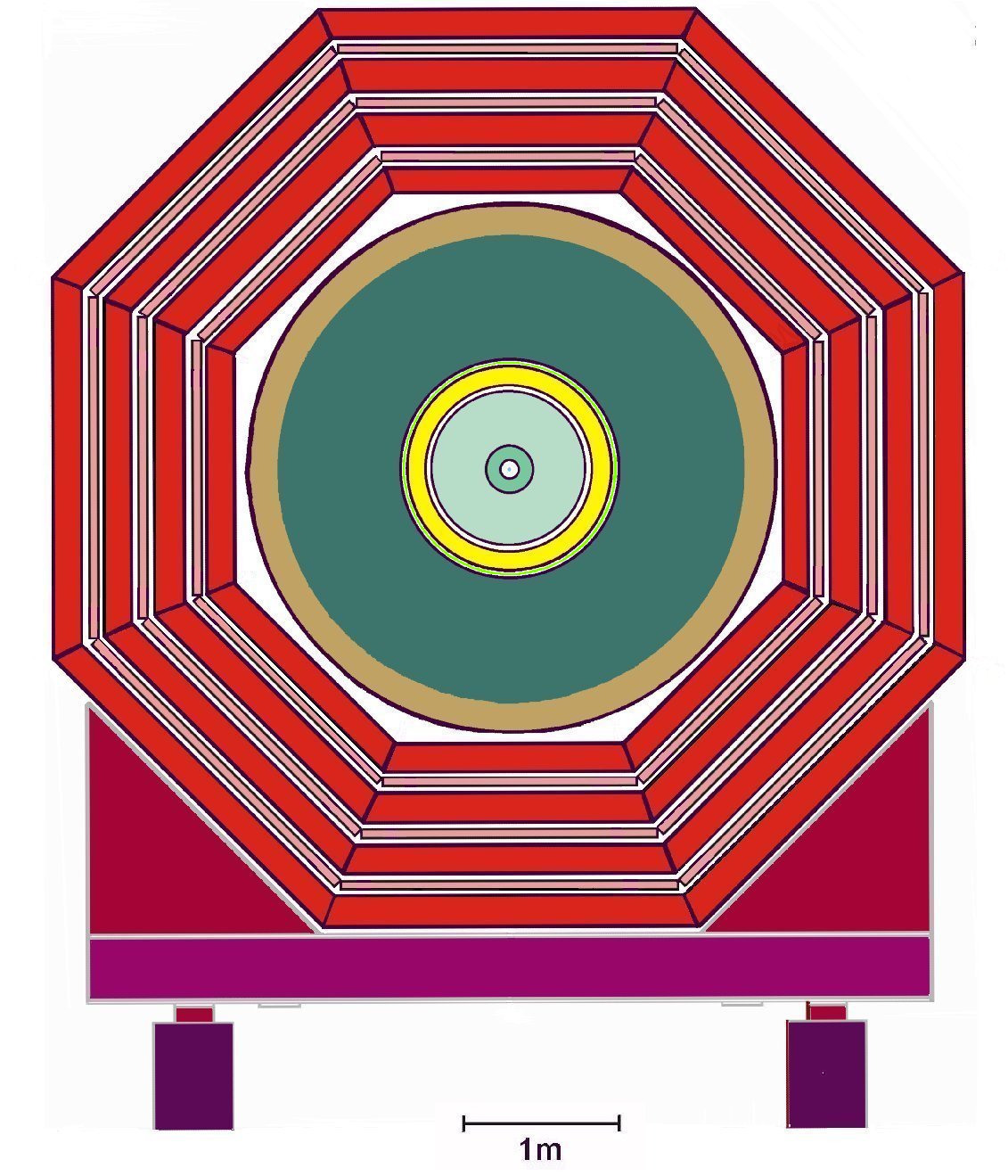
|
The muon identifier for the detector KEDR has a thickness
of the hadron absorber of 6-7 nuclear lengths.
After each layer of absorber there is a layer of streamer
tubes. The system comprises 8 cylindrical
octants covering 0.68 of 4 pi (47o< theta < 133o,
the angle is determined by center of 2-nd layer).
The total amount of the substance-absorber is determined
by desiderable coefficient of suppression of a hadron background
for hard muons. The pions and kaons are capable of imitating muons
either due to the probability to pass through the matter without
nuclear interaction, or to the decay into a muon and a neutrino.
The latter is possible if the angle between the direction of the
muon and hadron motions is so small that the precision of
coordinate measurements does not allow a kink in the track to be
identified and the measured momentum does not contradict the
range of a muon path.
|

![]()